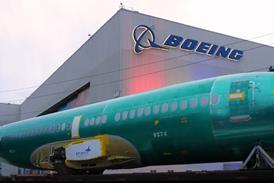KATE SARSFIELD / LONDON
Downturn in production looks set to continue into next year, but more positive market outlook predicted by 2006
Around 8,200 business jets valued at more than $135 billion will be produced between 2002 and 2011, according to aviation consultancy Forecast International. This represents an increase of 80% over the 4,556 aircraft produced between 1992 and 2001.
The Connecticut-based company concedes that the business jet market is experiencing a downturn after enjoying a boom since the mid-1990s. "Fragile economic conditions and declining corporate profits are taking their toll on the business jet market, as well as high fuel prices, limits on airport access and local noise regulations," says Forecast International.
As a result, annual production is expected to decline this year and next with around 730 business jets produced annually. A recovery should then begin, with annual production in 2006 expected to increase to more than 890 units. Forecast International adds: "By that time the initial backlogs for the various new models currently being introduced should be largely worked off and annual production may then decline. It is however expected to remain above 805 units for the remainder of the forecast period."
Fractional ownership companies, which hold around 45% of the current order backlog, are pivotal to the success of business jet builders. Forecast International says: "Some observers are concerned manufacturers could be dangerously exposed to large-scale cancellations or deferrals as the economy weakens. After all, the orders are placed by the programmes themselves based on expected demand and not by the actual users." The consultancy is optimistic, however, saying the potential market for fractional ownership is considerable and the programmes could help to mitigate any downturn in the business jet market. Cessna will lead the pack in unit terms, capturing slightly over 28% of the market share, producing 2,307 aircraft during the forecast period. Bombardier will take 23% of the market based on the production of 1,889 business jets. With a production of 1,055 aircraft, Raytheon will hold 12.9% of the market; Gulfstream 11.5% and 925 units; and Dassault 9.8% and 800 aircraft. In value terms, however, Bombardier is expected to take the top spot with 26.7% of the market over the next 10 years. Gulfstream is second with 22.8%, followed by Dassault with 16.2%, Cessna with 13.9% and Raytheon with 7.7%.
Forecast predicts production levels by market segment to 2011 of:
1,909 entry level types (for example, Cessna Citation CJ1, Raytheon Premier I, Eclipse 500); 764 light types (Citation Bravo/Encore, Bombardier Learjet 31A/40, Raytheon Beechjet 400A); 974 light medium types (Learjet 45, Citation Excel, Hawker 450); 1,225 medium types (Hawker 800XP, Dassault Falcon 50EX, Gulfstream G100); 1,021 super mid-size types (Gulfstream G200, Bombardier Continental, Hawker Horizon, Fairchild Dornier Envoy 3); 578 large types (Falcon 2000EX, Bombardier Challenger 604); 1,486 long range types (Gulfstream IV-SP/V, Bombardier Global Express/500, Falcon 900EX/7X); 244 corporate configured airliners (Airbus A319 Corporate Jetliner, Boeing Business Jet/BBJ2).Source: Flight International























